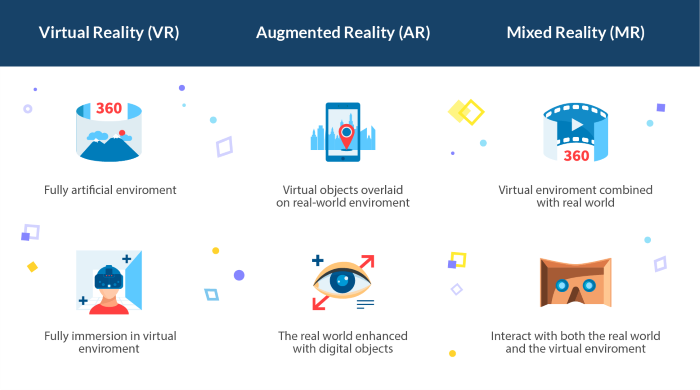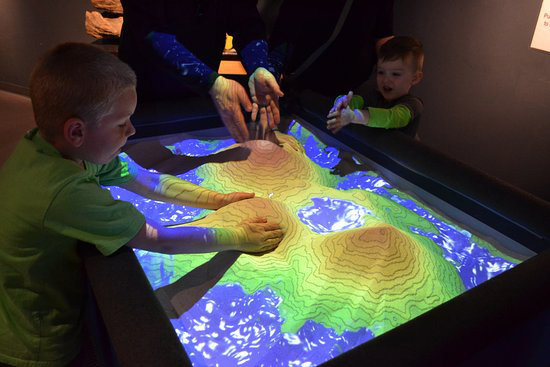Article on AUGMENTED REALITY (AR)
Many changes have been made in the technical field in the last few years. Due to these changes, the way of looking at the world has also changed. The launch of Augmented Reality (AR) and Virtual Reality (VR) has completely transformed various business sectors. These technologies have allowed people to interact better with technology. Apart from AR and VR, MR (Mixed Reality) technology is also available. The concept of MR was introduced with the Microsoft Hololens.
Augmented Reality (AR)
Augmented reality makes the user experience interactive by creating or adding digital objects and enhancing it by computer generated sound, visuals and multiple sensory modalities in real-world environment. In simple words, with the help of Augmented Reality technology, a digital world is created within the environment around you which looks as if it’s real. This technology is being used in the fields of digital gaming, education, military training, engineering design, robotics, shopping, and medicine. This technology works through the camera. The Pokemon Go game launched in the year 2016 is a good example of this. Also Instagram and Snapchat provide live face stickers using this technology.

Virtual Reality (AR)
Virtual Reality is the opposite of Augmented Reality. In virtual reality, a separate virtual world is created instead of the real world via headset fitted with camera. VR headsets are available in the market that includes HTC Vive, Oculus Rift, Google Daydream View. This technology is not only used in gaming, but it is also used in professional training such as doctors, pilots and hospitality sectors. But this technology is quite expensive and not everyone can afford it.
Mixed Reality (MR)
In Augmented reality, digital information like text, image, animation etc. are overlaid on the real-world just to enhance the individual’s experience but can’t interact with it. So we can say a user experience isn’t completely immersive whereas in Virtual Reality user is completely immersed in computer generated digital-world. This is where the mixed reality comes into picture. Mixed reality, as the name suggests, it gives the experience of both AR and VR and allows real and virtual elements to interact with each other in an environment. Mixed Reality is an extension to an augmented reality. Mixed Reality Platform is introduced by Microsoft. This technology is made available with the Hololens. In this, the camera used for Augmented Reality creates a virtual reality effect. This technology is expected to grow rapidly in the coming times. It is considered better and more detailed than AR and VR. This may come in handy for industry works and medical professionals in the coming times.
Working of Augmented Reality
An AR enabled device, it can be any camera-equipped device with AR software installed in it like smart phone, tablet or smart glasses. When this AR enabled device is pointed towards an item or object, it starts analyzing the raw camera feed or video stream. And with the help of the computer vision technology or marker tracing or GPS tracking, software identifies and the objects and creates replica of an object on the cloud. Movement and the depth are measured using sensors on AR enabled device. Data on newly-created replica of the object is streamed along with the additional data which enhances the user experience. This process is called rendering. What we see on the display is the digital version of the feed received from camera but human brain doesn’t notice delay of approx. 50ms.
Types of Augmented Reality

Projection based AR or spatial AR: In this type of AR, Digital image is projected on real-world place or physical surface using artificial light. It can be interactive or non-interactive.
Example of Interactive projection based AR: Functional digital keyboard projected on the desk or flat surface, digital dialer on your hand or a 3D Hologram floating in the air.
Example of non-interactive projection based AR: You can add or place virtual furniture into your real life environment i.e. home or office. It makes easier for you to choose product of best-fitting styles and sizes. You can check if fits into the available place by changing its position and orientation, so you can make decision before purchasing it. It will give you a hint, whether to buy smaller or bigger furniture.
Recognition based AR or Marker based AR: Deep learning is a subset of machine learning, which in turn is a subset of Artificial Intelligence. Deep learning is type of machine learning that uses multi layer neural network to classify data, learn and predict output.
Marker less AR: It shows 3D content on the real-world environment and does not require any trigger. Difference between marker based AR and marker less AR is just a surface.
Location/Geo based AR or Position based AR: Location based app helps the tourist to discover new and interesting places as it uses the GPS, digital compass, gyro-sensor and accelerometer features of smart phone. By detecting the current location, position and direction in which tourist is heading, the relevant information of that place is added on the display screen. Location based AR is most widely used many applications and reason is availability of smart phone.
Outlining AR: Human eye cannot see boundaries of the road in low light or foggy weather conditions and person driving car in this condition may meet with an accident. Advanced infra red night vision cameras installed in the car have ability to identify objects in low light and foggy condition and used for outlining the road boundaries hence can avoid mishaps. This technology is also used by architecture and engineers in construction of the buildings and their supporting pillars and metal bars.
Superimposition based AR: In this AR, an original view of an object is partially or completely replaced by an augmented view of an object. This is another version of recognition based AR with slight variation that it uses real objects instead of using markers. If app doesn’t not know exact place what and where to look at then it won’t be able to replace the original view of the object with the augmented object view. Doctor will get clear understanding of the damaged bones of patient if the X-ray view of the patient’s body part is superimposed by the real image and it can be seen on the screen.
Applications of Augmented Reality
- Sports referring and training: AR technology is used while telecasting live coverage of sport matches like football, cricket, etc. For Example, in cricket match for detecting wide ball and no ball, AR technology is used for making right and fair decision and avoiding controversial umpiring. Video Assistant Referees commonly known as Third Umpire uses AR technology analyzes the play by comparing predicted path and actual path of trajectory made by ball from different angles. AR can be used for training players and improving skills and technique by creating new environment and situations by overlaying real-time videos.
- Navigation System: Live view of surroundings that is real and physical environment is seen through the mobile camera is superimposed by the route direction and other details instead of just showing map on the mobile’s display screen for navigation.
- Designing and modeling: Civil Engineers and architecture with the help of AR can visualize their final project design how it would look like and can make changes during the construction. It will considerably reduce costs.
- Tourism: App using location based AR will work as virtual guide, giving tourist an information about the important buildings and telling about the nearby amazing and interesting places to visit along with direction. By superimposing ancient picture of the buildings or monuments over today’s remaining ruins of the monument will let the tourist how it used to look like back then.
- Ecommerce: Customer can use virtual try-on apps to try clothes, eye-glasses, shoes, make-up just by using their mobile phone while buying products online. With this new way of engaging customers for tying out products, there are high chances of customer buying that product in the future. With the help of virtual tape app customer can even measure their home and commercial space and place 3D furnishings and accessories to view how it would look like. With the help of visualize app customer can try different shades of paint for their room before buying it.
- Healthcare: AR can be used for training medical students for giving effective and in depth training. Nurses can use handheld equipment like vein finder as 45% of such matters need escalation. Tumors model can be made using AR diagnostic tool which helps surgeon to plan better before surgery. Surgeons will have all the vitals of the patient’s at one place in real-time on display screen while performing surgery and can concentrate on surgery.
- Field Services: Be it small or big machineries, technician equipped with AR glasses can identify and fix the problem quickly.
- Education: Teachers can use AR for making lectures interactive and giving the students richer learning experience.
- Business Logistic: In shipping companies with the help of AR glasses the ground employee can locate the exact place and smallest route to pick up the shipment from warehouse as worker have information of shipping item and route of warehouses on glass display.
Join Famark Community!
Famark community is a social platform for creative and innovative professionals from different domains.
Join Community